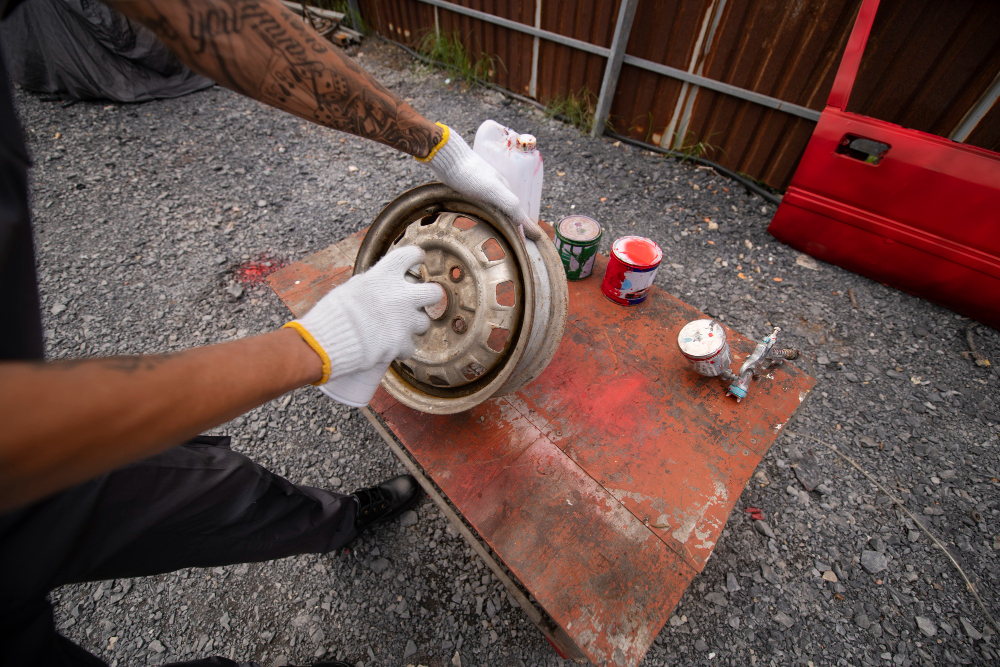How to Paint Concrete Block

Painting concrete blocks can transform a dull, utilitarian surface into a vibrant, aesthetically pleasing feature. Whether you’re looking to spruce up a basement wall, an outdoor patio, or a commercial space, understanding the correct process is essential for a durable and professional-looking finish. This guide covers everything you need to know about painting concrete blocks, including preparation, paint selection, and application techniques.
Understanding Concrete Blocks
Concrete blocks, also known as cinder blocks, are a popular building material due to their strength, durability, and versatility. They are commonly used in both residential and commercial construction for foundations, walls, and other structural elements. However, their porous nature and rough texture can make painting a bit challenging without proper preparation and techniques.
Preparation: The Key to Success
Proper preparation is crucial when it comes to painting concrete blocks. Begin by thoroughly cleaning the surface to remove any dirt, dust, and debris. Use a stiff brush and a mixture of water and mild detergent for this task. For more stubborn stains or mildew, a solution of water and bleach can be effective. After cleaning, rinse the blocks with clean water and allow them to dry completely.
Next, inspect the concrete for any cracks or imperfections. Use a concrete patching compound to fill in any gaps or holes, smoothing the surface as much as possible. Once the patching material is dry, lightly sand the area to ensure a smooth, even surface.
Choosing the Right Paint
Selecting the right type of paint is critical for achieving a long-lasting and attractive finish on concrete blocks. Acrylic latex paint is a popular choice due to its durability, flexibility, and ease of application. For outdoor applications, consider using a paint specifically formulated for exterior use to withstand the elements.
Priming the concrete blocks is a necessary step before painting. A high-quality masonry primer will help the paint adhere better and provide a more uniform finish. Apply the primer with a brush, roller, or sprayer, ensuring that it penetrates the porous surface of the concrete.
Painting Techniques for Concrete Blocks
Once the primer is dry, it’s time to apply the paint. For best results, use a combination of brushes and rollers. Start by using a brush to cut in around the edges and any hard-to-reach areas. Then, use a roller to cover larger surfaces, working in small sections to maintain a wet edge and avoid lap marks.
Apply the paint in thin, even coats, allowing each coat to dry completely before applying the next. Depending on the color and type of paint, you may need two to three coats for full coverage. Be patient and avoid rushing the process to ensure a smooth, professional finish.
Maintenance and Longevity
To keep your painted concrete blocks looking their best, regular maintenance is essential. Periodically inspect the painted surfaces for any signs of wear or damage, and touch up any areas as needed. Cleaning the surface with a gentle soap and water solution will help maintain its appearance and prevent the buildup of dirt and grime.
By following these steps and using the right materials, you can achieve a beautiful and durable finish on your concrete blocks that will enhance the look of your space for years to come.
FAQs
Q: Do I need to seal concrete blocks before painting?
Sealing is not always necessary, but using a high-quality masonry primer before painting can enhance adhesion and provide a smoother finish.
Q: What type of paint is best for concrete blocks?
Acrylic latex paint is highly recommended for concrete blocks due to its durability and flexibility. For exterior projects, use paint formulated for outdoor use.
Q: How many coats of paint are needed on concrete blocks?
Typically, two to three coats of paint are needed for complete coverage, depending on the color and type of paint used.






